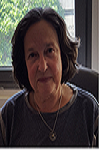
Hedva Spitzer
Tel Aviv University, Israel
Title: Multi scale texture measure for companding HDR images and segmentation algorithms
Biography
Biography: Hedva Spitzer
Abstract
We propose a segmentation algorithm and algorithms for companding high dynamic images, which include crucial multi scale texture. This component serves us as an adaptation measure for the algorithm of companding the high dynamic range, and for the segmentation algorithm of non-homogeneous edges and regions. This component was originally inspired by computational model for modeling adaptation mechanisms of assimilation effects in the visual system, were probably functional in enhancing the differences between adjacent texture regions. Many algorithms have been suggested to cope with challenge of the effective companding (compressing and expanding) of high dynamic images. However, the need for a simple, robust and fully automatic algorithm for a large repertoire of images has not yet been met. An algorithm of multi scale adaptive contrast companding (ACC) is suggested, which is inspired by the adaptation mechanisms in the visual system, where a texture contrast in a specific region appears stronger or weaker according to its own value and according to its context contrast. The ACC algorithm successfully compands a large variety of LDR and HDR images, including medical images.The segmentation algorithm applied to B-mode ultrasonographic breast lesions is very challenging. Many studies have tried to answer this aim, with trials to perform maximal resemblance to the contour made by a manual delineation of trained radiologist. In this study, we have developed an algorithm, designed to capture the spiculated boundary of the lesion the above unique multi-scale texture identifier integrated in a level-set framework. The algorithm's performance has been evaluated quantitatively via contour-based and region-based error metrics, on both the algorithm–generated contour and the manual contour delineated by an expert radiologist. The evaluation showed: 1) Mean absolute error of 0.5 pixels between the original and the corrected contour; 2) Overlapping area of 99.2% between the lesion regions, obtained by the algorithm and the corrected contour. These results are significantly better than those previously reported.

